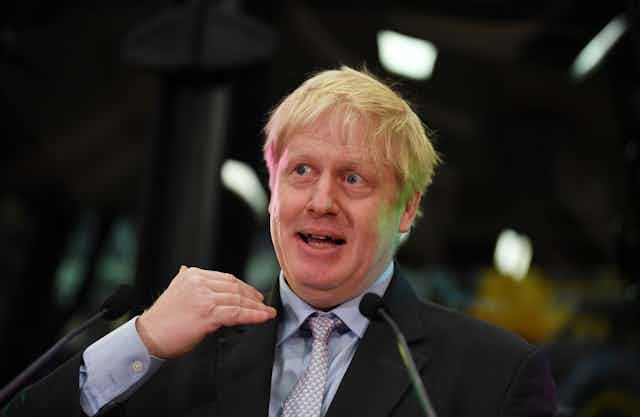The social media campaigns have begun. Some are limbering up by going for a jog. Boris Johnson has even had a haircut. The Tory leadership race is on.
With the prime minister telling her backbenchers she’ll step down if they support her Brexit deal, behind the scenes, Conservative MPs are getting ready to throw their hat in the ring to replace her. But what type of candidate should they choose?
The transport secretary, Chris Grayling, has said the next leader must be a senior eurosceptic. There’s certainly some logic to that: whoever the candidate is, they will need to win over the relatively small group of around 100,000 Conservative party members who are overwhelmingly to the right of the public and favour a hard Brexit. But while such a figure is likely to claim the top job, they might not be able to keep it for long, let alone govern effectively while they have it.
We’ve seen over the past weeks and months how important a stable majority in the House of Commons is, yet if May is ousted before the withdrawal agreement is passed, a new leader who is more committed to Brexit at any cost is unlikely to fare much better in uniting the House and overcoming the legislative logjam.
If May somehow gets her deal through and then voluntarily steps aside for a new leader, there are no guarantees that the leadership drama will end there. That will only have been phase one of the Brexit negotiations; the second phase is likely to be far trickier and take far longer to navigate. A general election to break another, currently unforeseen impasse in the process is therefore plausible.
Key demographics
If that leader does then go to the country, they may be in trouble. Analysis of the 2017 general election shows that the Conservatives under May had a problem with several rather large constituencies of voters, namely younger people (and we can be quite loose with the term “young” here), ethnic minorities and women.
While the alleged “youthquake” in turnout in 2017 was found to actually be more of a tremor, the relationship between age and party of vote was seismic. The authoritative British Election Study validated the vote data and revealed that the Labour party secured a greater proportion of the votes of every age group from 18 to 45 – and the younger the age group, the greater the advantage to Labour.
Age is now one the most significant predictors of party support, playing a greater role than social class. If this is a cohort rather than a life cycle effect, and the size of the difference between older and younger generations suggests it might well be, then we can expect to see the Conservatives’ support slip further, as new cohorts replace older generations in the electorate. The party’s contemporary problem with younger voters would most likely be exacerbated by a hard Brexiteer prime minister – according to political scientist John Curtice, the stark age difference in the referendum vote itself is even greater now than it was in 2016.

A new, more eurosceptic Conservative leader would also be a failure of strategy if the party wants to win more support among black and ethnic minority voters. And if the Conservatives want to remain a party of government, this is a section of the electorate that they can ill afford to ignore.
In 2017, 76% of non-white voters backed Labour, while just 17% voted for the Conservative candidate. The proportion of constituencies where the votes of ethnic minority communities are critical is growing as the demographics of the country change. While there is variation within ethnic minority communities, the overwhelming majority of BAME voters opted to stay in the EU in 2016.
And what about women, who make up the majority of the electorate? For the past six decades, the Tories have not had a problem with female voters. But at the last election, a smaller proportion of women voted Conservative than men for the first time ever, reversing the historic advantage the party had among this group.
Despite some myths to the contrary, women are just as likely to turn out and vote as men, and there was not a significant difference in how men and women voted in the EU referendum. But women are less likely to be fervently anti-European.
In 2017, the gender gap that emerged was in a large part due to the movement of men from UKIP to the Conservative party (two thirds of UKIP voters were men in the 2015 election). Should Tory party members opt for a leader who aligns with their politics on the EU, they might find that they lose even more women voters.
In order to secure a workable majority in the House of Commons, the Conservatives have to make gains among all these groups. But the party is in danger of overcorrecting in response to the message delivered by Brexit.
David Cameron’s failure to secure a majority in 2010 might have led party members to believe they should have stuck to their guns and resisted his calls for modernisation. But to secure a stable majority the Conservatives need to take more of the centre ground – moderate Remainers as well as moderate Brexiteers. A strategy that focuses on a hard Brexit approach from the right of the party won’t win the coalition of voters from diverse communities, across the sexes and generations that is needed to govern.

